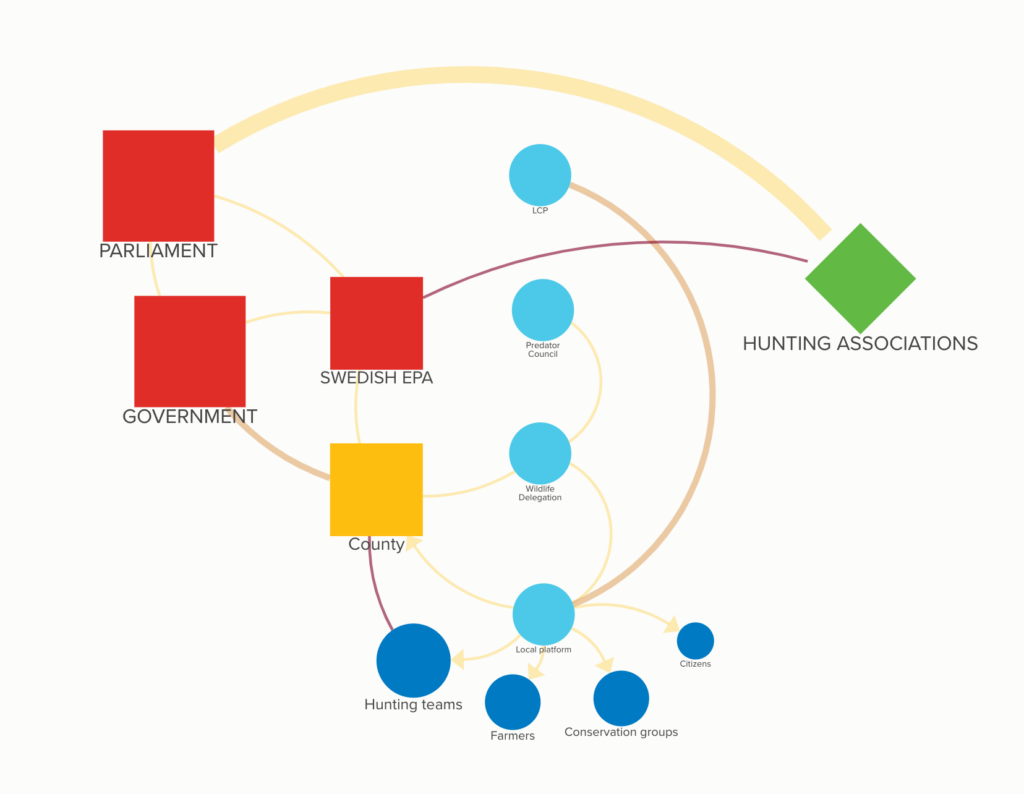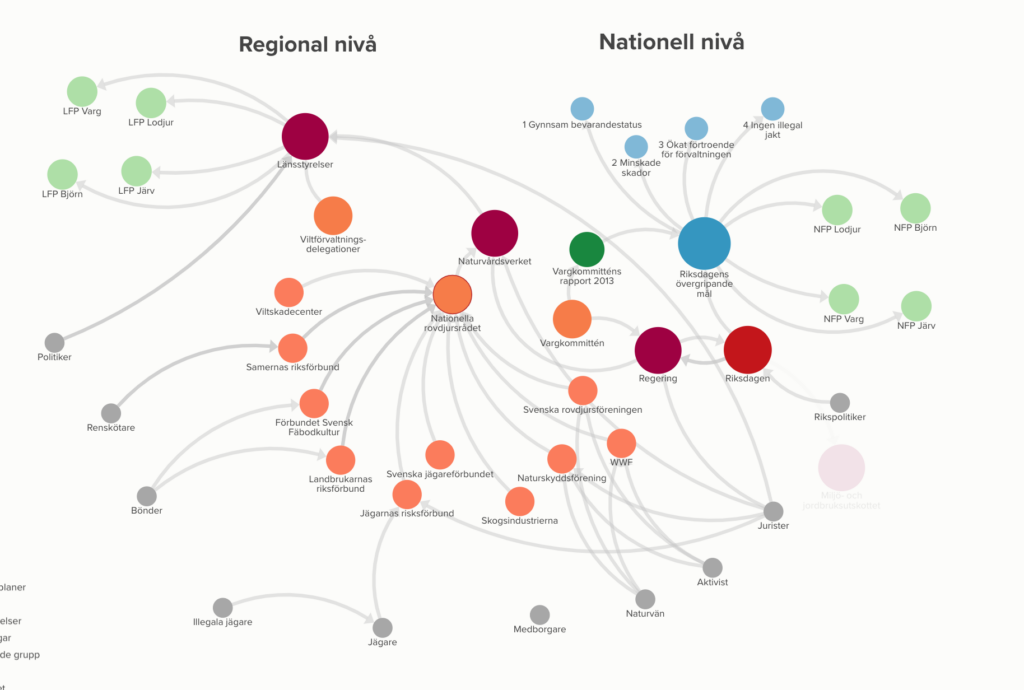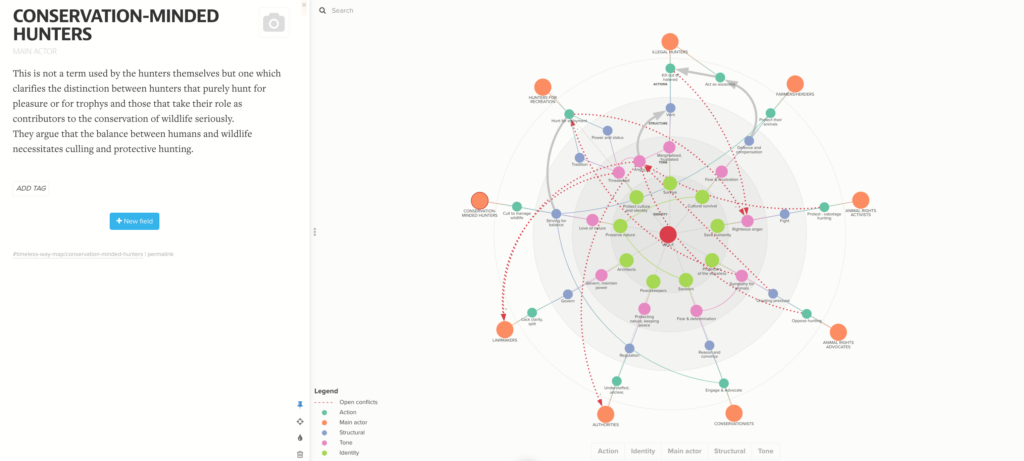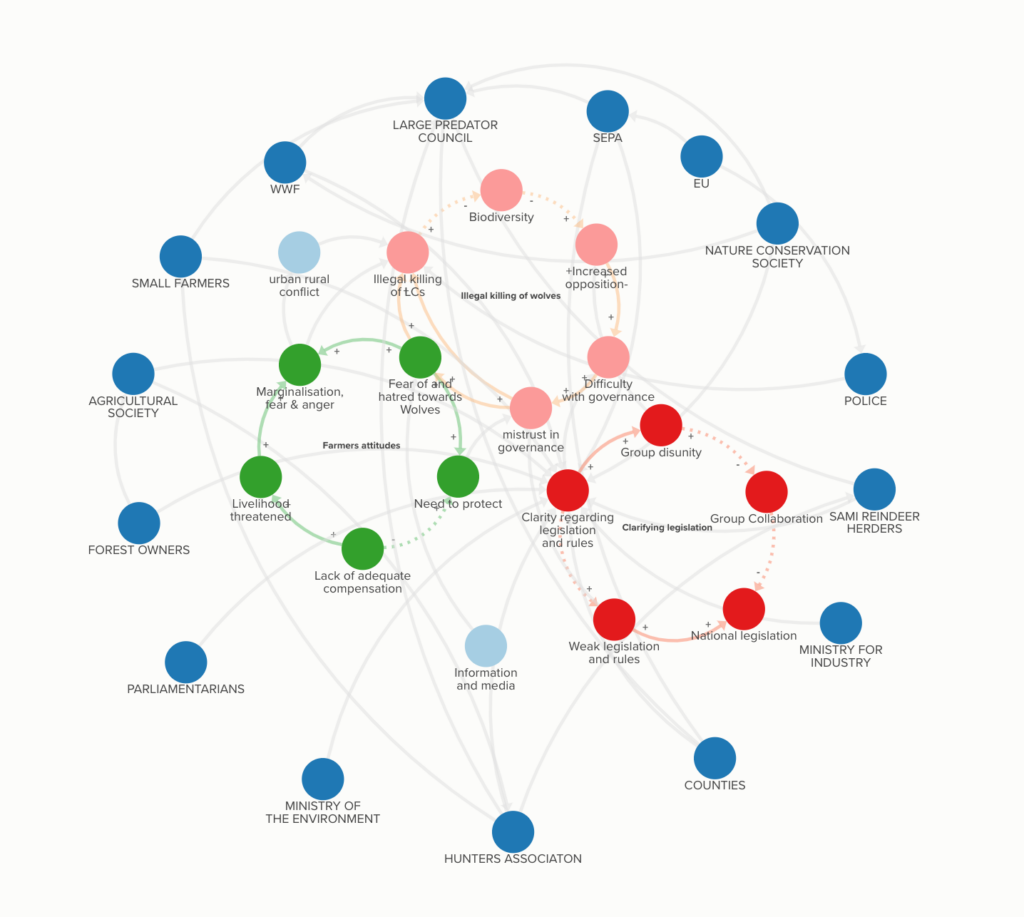A Stakeholder Mapping Guide
For use in natural resource conflicts and dialogue
The Guide
One of the best ways to make sure to include all the key actors in a platform is stakeholder analysis and mapping. This step-by-step guide seeks to help you navigate this process and avoid the risk of excluding important stakeholders or perspectives.
WORK IN PROGRESS
There are four steps in the process. The time needed for each will depend on how much information you require. Time and resources may also limit the width and depth of your inventory of stakeholders and their perspectives.
The steps are:
1. Inventory
This process involves, at the very least, a brainstorming activity. If you have limited time and resources this can be done with a group that is familiar with the issues and stakeholders involved. It may also involve a more extensive process of interviews, conversations, meetings and scanning of documents and media.
2. Categorise
In this step, you group the results of the perspective gathering. Are there any stakeholders that can be put into one category? How can you name this category? Are there any types of stakeholders you forgot about? Much will depend on the level of detail you want in your map.
3. Assess, analyse & prioritise
Having categorised the stakeholders, you need to consider aspects such as the power they have to affect decisions and what it is that motivates them. Noting information about the attitudes of the stakeholders, their aims and vision, the power they have and so on, will, however, help you in planning your process.
4. Connect
This step concerns the relationships between the different stakeholders. You can colour code and assign weights to the lines between different stakeholders or categories of stakeholders. This will help you to identify possible obstacles that might hinder collaboration or even participation.
Step 1 – Inventory
In this first step, your primary task is to listen. You need to identify all the actors affected by, affecting or connected to a particular issue or problem. The quick version is to sit down, alone or with a team, and make a list. Better yet, you can speak to those who you know are connected to the issue. Ask them about their perspective, what motivates them, and their willingness to participate in a dialogue. You can use the stakeholder inventory template as inspiration.
By asking those you speak to: “who else is involved?” or “who else should I speak to?” you will discover stakeholders that you might have missed. It is during this phase that you might want to identify and connect with key representatives for a later dialogue.
It may be useful during this stage to scan social media platforms, the media and articles. Here you often discover stakeholders that are not organised and belong to networks – some of which have significant influence.
Step 2 – Categorise
An early word of warning: categorisation can be perceived as biased if you choose controversial labels or group people together who do not like each other. One way of avoiding this is to include certain key stakeholders in this categorisation process. Another is to ensure that you remain impartial or neutral throughout this process.
Categorisation simply implies that you group similar stakeholders together. In the case of large carnivores, you may have those who are in favour of their preservation, those who are opposed and those that are indifferent. Hunting groups may be placed in a single category while conservationists in another. You may however wish to differentiate, for example, between sub-categories such as hunting groups in favour of conservation and those suggesting the eradication of a species.
At this point, you need to ask: which stakeholders are missing?
Step 3 – Assess, analyse & prioritise
In this step, you can return to the questions you may have posed in step 1. For example:
- How much power does a particular stakeholder have to influence decisions?
- What motivates this stakeholder? What do they want?
- To what extent will decisions or agreements affect the stakeholder?
- What is the quality of the relationship between the stakeholder and other stakeholders?
On a map, you may indicate values such as power or position with size, colours and shapes. If you use a digital mapping tool (such as Kumu) you can include information in the fields linked to the different stakeholders.
Step 4 – Connect
In this step, you can indicate the quality of the relationship between different stakeholders. Connections can represent good, neutral or conflictual relationships using colours and weak and strong links using the width of a line. You can of course choose to skip this step if it involves more detail than you need.
Understanding the quality of the relationships can be useful in cases where you need to be aware of hot spots – or conflicts that might affect the process. Dealing with these in advance of a collaborative process might be worth the investment in time and resources.
Making the map
The four steps above can be done in one sitting by a group using a whiteboard, large paper sheets, sticky notes or digital tools such as Miro or Kumu. A longer process could involve a first prototype which is then added to as you work through the steps. Producing a final map or document can be done by hand or digitally.
Read more ...
The advantage of digital tools is that changes are easy to make. Miro and Kumu allow unlimited space for extending the map and maintaining it as a “living document”. The same applies to a written document, except for one important difference. A great amount of text in a linear form might be inhibiting when you need to communicate the results of your inventory process. Hyperlinks and websites allow for easier navigation in such cases.
Examples of maps
Here is an example of a simple map that indicates the power or stakeholders and groups them into different areas or zones.

Here is an example of a more complicated map (in Swedish, using Kumu):

In the following (advanced) stakeholder map, different aspects of stakeholders are shown. Note the field on the right where details can be added for each node:

In this map actors and perspectives are combined in one map

